HOMEMADE Zenzai (Japanese Red Bean Soup with Rice Cake) and Oshogatsu 2011 (Japanese New Year)
Does anyone know how long the terrible-two’s last? Is it one year? Is it two years? Two and a half years?
Over the weekend, Bebe E found a black ballpoint pen and drew a nice long dark squiggly line down the entire length of one cushion of our sofa. Nice, huh? And technically, she’s not even two yet. Scary.
Of course, we have “coloring time” where Bebe E opens her little box filled with washable crayons and magical markers with invisible ink where the color only appears when used on special coloring book paper. She even has a nice musical coloring pad that Big Onechan gave her for Christmas that plays music with the pressure of every stroke of a crayon, but clearly that’s not entertaining enough. The sofa, our home, is her canvas.
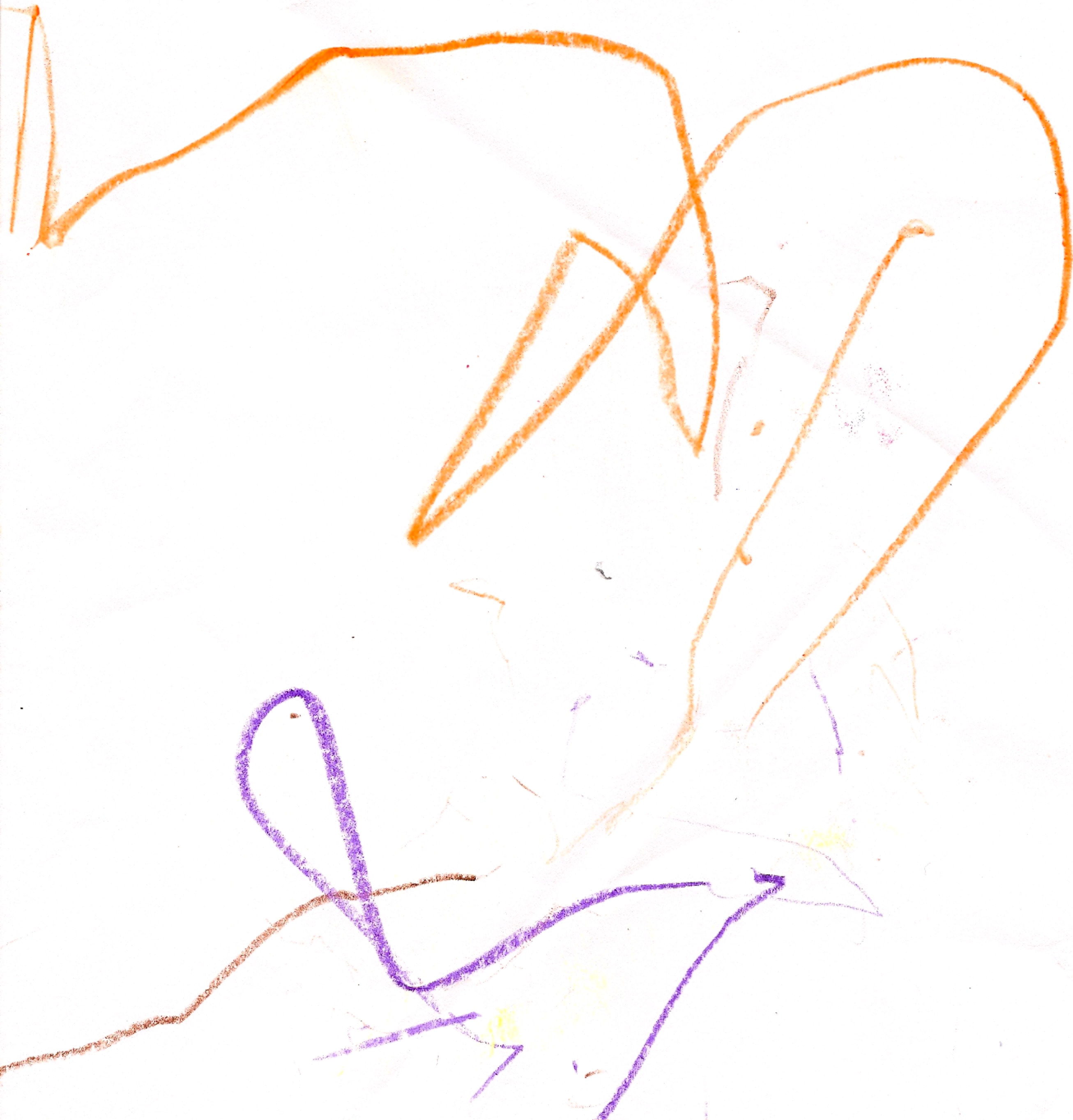 Bebe E’s abstract art of little lines. Mama helped with the big squiggles.
Bebe E’s abstract art of little lines. Mama helped with the big squiggles.
I’m really not sure how she got a hold of that pen, and what drove her to write on the sofa. She’s a baby after all, right? But this tiny act of vandalism, a.k.a. creativity, likely means that her Mama, Dada, or Big Onechan didn’t do a good job putting the pen away and ultimately means that her latest artwork was likely not entirely of her own creation. Yes, she’s cute, she’s quickly absolved of home vandalism, and she evades time-out… this time.
While time-out’s are quickly becoming a familiar word in her vocabulary, she’s only been in time-out twice in the past month. The first one lasted a whopping 3 seconds as she quickly ran away from her corner, not really understanding that staying in the corner was punishment for bad behavior. The second time-out lasted, maaaaybe, 10 seconds. That time I believe she realized that she did something “bad” but as I walked away from her corner, gently instructing her that she needed to sit there for 20 seconds and that we could count together, in her cute tiny baby voice she inquisitively said, “mama?” and followed after me. All I could do was to turn around and try to give her a big hug and kiss but she walked right past me to go do her own thing. Heh-heh. I think she was telling me that she was mad at me for giving her a time-out. I just had to laugh.
So why initiate time-out’s at a seemingly young age? To be honest, we recently went to a regularly scheduled well-baby exam and on the parent hand-out that we get at each well-baby exam, time-out was a suggested form of discipline for the ever-growing-terrible-two’s-toddler. I thought I’d give time-out’s a try as our days have been filled with increased screaming and little temper tantrums. In addition, Bebe E’s favorite word is “no”, but it probably doesn’t help that sometimes I just laugh when I’m trying to scold her and all she keeps saying in her cute little baby voice is, “no”, “no”, “no”. It starts to get pretty funny. My laughing during discipline probably doesn’t help the situation. It probably doesn’t help that Bebe Dada is a softie too.
I’m certain that over the next 1 to 2, to 2 1/2 years, we’ll have many more terrible two’s moments to come, but I will do my best to remember that even these trying moments are precious moments nonetheless. I’ll try to remember this BEFORE I open my mouth and raise my voice.
 Honestly, how could we be mad at our little “angel”.
Honestly, how could we be mad at our little “angel”.
She can do NO wrong, right?
Not too long ago I promised to share my Mom’s homemade zenzai recipe after I experimented with an “instant” version that was not bad, but also, not great. I must say, nothing beats zenzai that is cooked with dried azuki beans from scratch. As a matter of fact, any azuki Japanese wagashi that is made from scratch is well worth the effort. The last homemade azuki wagashi I made was my mom’s ohagi, and THAT is definitely worth the time and effort. As painstaking as it is sometimes to make homemade dishes, you realize that it’s definitely worthwhile as soon as you take the first bite. My mom’s homemade zenzai is no different.
This past oshogatsu, I made homemade zenzai for dessert. Thankfully, my mom taught me how to freeze individual-sized portions so that I am still enjoying zenzai almost two months later on a cold rainy night like this past Friday. Typically, my mom serves homemade zenzai, not with shiratama dango, but instead with homemade mochi. This makes our family’s zenzai a very hearty dessert.
Just so I don’t mislead you, I should clarify that our homemade mochi comes from the West Los Angeles Buddhist Church annual mochitsuki. Mochitsuki, is a traditional mochi pounding ceremony where mochi is made from grains of glutinous rice and pounded into a sticky, smooth consistency using a wooden mallet or kine. There are typically two people who work to make the mochi – one pounds the mochi while the other wets and turns the mochi in a traditional motar or usu.
In high school, my friends and I volunteered every December to help with mochitsuki. For some reason, I have vague memories of either going out and/or having a sleepover at one of the girls’ homes, staying up ALL night and then making mochi from 4 AM so that it was ready for the mochi sale at 10 AM. But I digress… In today’s modern times, mochi is often pounded by mochi-making machines. That’s what we used at the WLA mochitsuki, rather than a kine commanded by powerful human hands.
By far, mochi that is made from scratch (even with the machine) is much tastier than that which is made from mochiko or glutinous rice flour. My parents have a mochi-maker and my Mom and I keep talking about getting it out of storage and using it one of these days but we have yet to make homemade mochi. Seriously, we need to make plans to do this soon! My stash of mochitsuki mochi that I have stored in the freezer is about to run out.
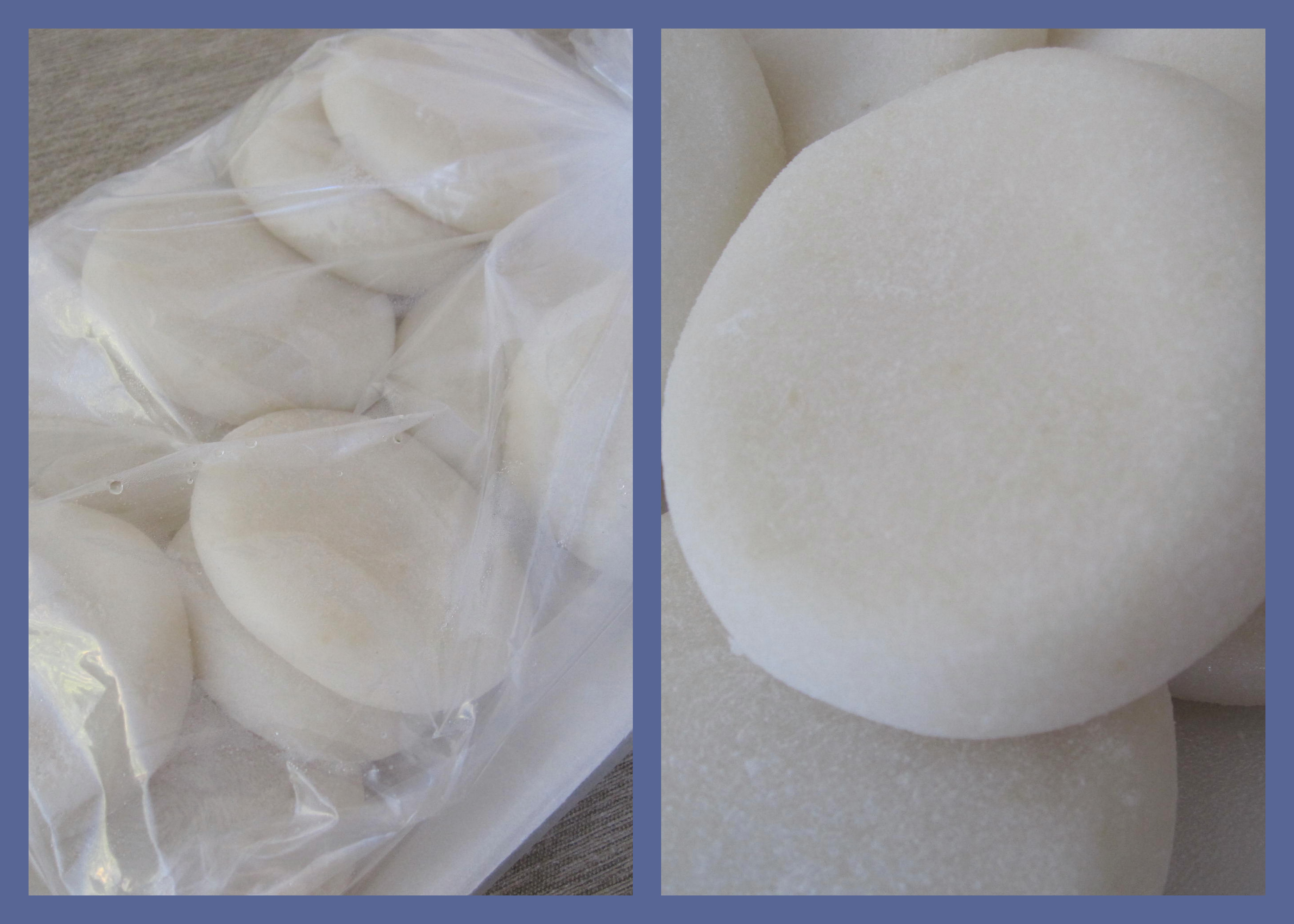 Mochi made by WLA Buddhist Church Mochitsuki
Mochi made by WLA Buddhist Church Mochitsuki
Mom’s Homemade Zenzai
serves 6 to 8
- 2 cups dried red azuki beans
- 2 cups sugar (adjust to preference)
- 1 teaspoon salt
- 9 – 10 cups water
- water for soaking beans
- mochi
1) Soak azuki beans overnight or 2 to 3 hours if you’re short on time. Rinse beans with cold water.
2) In a large stock pot, boil 6 – 8 cups water, add beans and reduce heat to medium-high. Boil beans for about 20 – 30 minutes while skimming and discarding foamy residue as it forms on the top.
Reduce heat to low and simmer for approximately 2 to 2 1/2 hours until water reduces to a thicker, soupy texture and beans are soft. During this time, continue to add water, 1 cup at a time (up to 4 cups) depending on your preference of the soup’s thickness. Continue to skim foamy residue as it forms.
NOTE: My mom’s zenzai typically still has some beans in tact, while other beans have cooked down to a pulpy texture which makes-up the texture of the soup. Feel free to adjust cooking time to establish the texture of your preference.
3) Once the beans are cooked and the soup has reached the thickness that you desire, bring heat to medium, add salt and sugar.
NOTE: I recommend adding 1 cup of sugar initially, then adding a little bit of sugar at a time, up to 2 cups total. According to my Mom, traditional zenzai is very, very sweet, and the ratio of beans to sugar should be equal:
2 cups beans = 2 cups sugar. I prefer zenzai that is less sweet and even my Mom doesn’t adhere to the suggested ratio of sugar and beans and uses less sugar when making her zenzai.
When I made our zenzai for oshogatsu, I used one bag of azuki beans, or roughly 4 cups, 2 teaspoons salt and roughly 25 cups of water. I used approximately 3 1/2 cups of sugar but it was a bit too sweet to my liking. I simmered the azuki for almost 3 hours, stirring occasionally and adding water as it reduced to achieve a soup-like consistency.
4) When the zenzai is ready to be served, warm one piece of mochi individually on a small plate with a bit of water in the microwave for about 30 seconds or until the mochi is hot and pliable. The mochi should still maintain it’s round shape.
Transfer the mochi to individual serving bowl and pour hot zenzai over the mochi. Serve immediately and enjoy!
Alternatively, mochi can also be grilled to perfection – crunchy on the outside and soft and gooey on the inside. I’ve enjoyed zenzai with grilled mochi at Japanese restaurants in the past, and it’s delicious! Out of sheer laziness, I prefer to microwave the mochi and enjoy it’s pure gooeyness in the sweet soup, but by all means, try grilling the mochi for added texture!
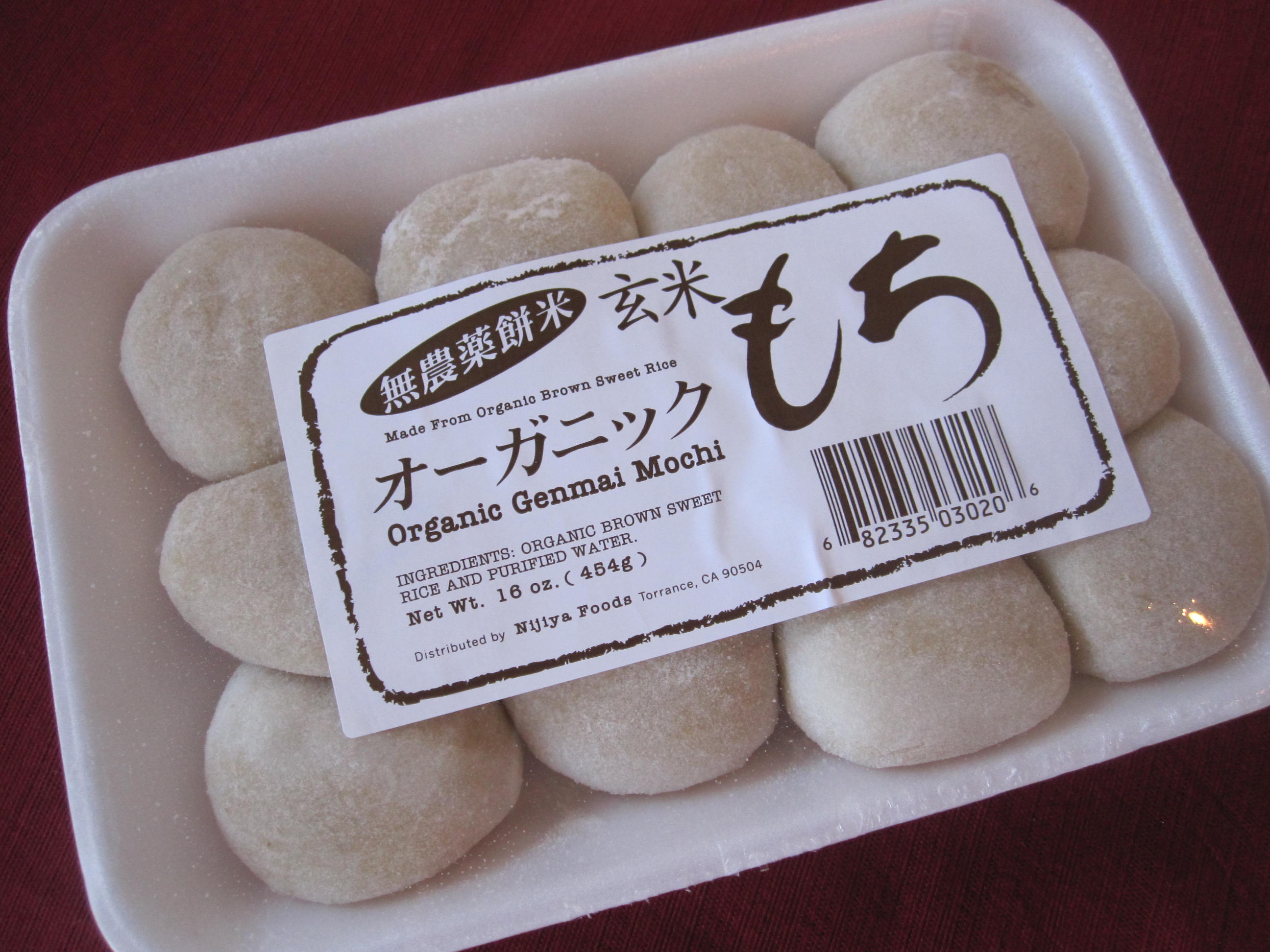 Organic Genmai (brown rice) Mochi
Organic Genmai (brown rice) Mochi
I purchased this at Nijiya Market in WLA.
NOTE: Mochi can be purchased from most Japanese supermarkets. It is sold fresh and should be kept at room temperature and eaten within the day, else the mochi will become hard. Alternatively, mochi can be stored in the freezer and used as needed. To use frozen mochi, simply warm in microwave without thawing (see #4 above).
I hope you’ll give homemade zenzai a try. It’s definitely better than the instant version I previously posted, and definitely worth the time and effort.
Cheers!
Judy | bebe mama
- 2 cups dried red azuki beans
- 2 cups sugar (adjust to preference)
- 1 teaspoon salt
- 9 - 10 cups water
- water for soaking beans
- 6 to 8 pieces mochi (rice cake)
- Soak azuki beans overnight or 2 to 3 hours if you're short on time. Rinse beans with cold water.
- In a large stock pot, boil 6 - 8 cups water, add beans and reduce heat to medium-high. Boil beans for about 20 - 30 minutes while skimming and discarding foamy residue as it forms on the top.
- Reduce heat to low and simmer for approximately 2 to 2½ hours until water reduces to a thicker, soupy texture and beans are soft. During this time, continue to add water, 1 cup at a time (up to 4 cups) depending on your preference of the soup's thickness. Continue to skim foamy residue as it forms.
- Once the beans are cooked and the soup has reached the thickness that you desire, bring heat to medium, add salt and sugar. NOTE:
- I recommend adding 1 cup of sugar initially, then adding a little bit of sugar at a time, up to 2 cups total. According to my Mom, traditional zenzai is very, very sweet, and the ratio of beans to sugar should be equal:
- cups beans = 2 cups sugar.
- When the zenzai is ready to be served, warm one piece of mochi individually on a small plate with a bit of water in the microwave for about 30 seconds or until the mochi is hot and pliable. The mochi should still maintain it's round shape.
- Transfer the mochi to individual serving bowl and pour hot zenzai over the mochi. Serve immediately and enjoy!


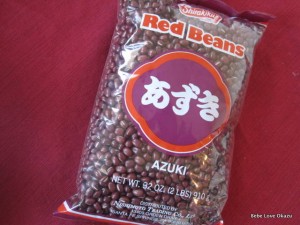

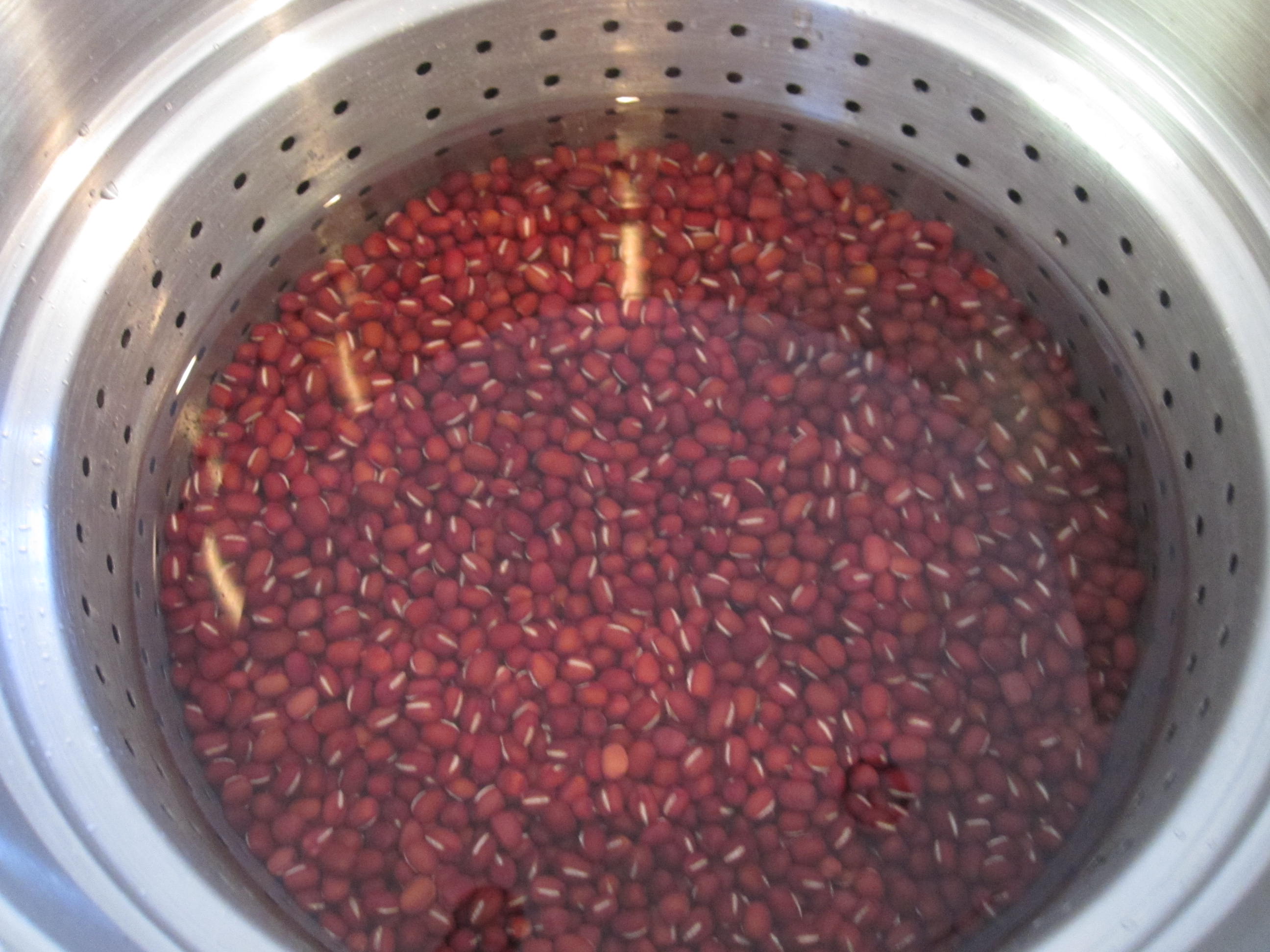

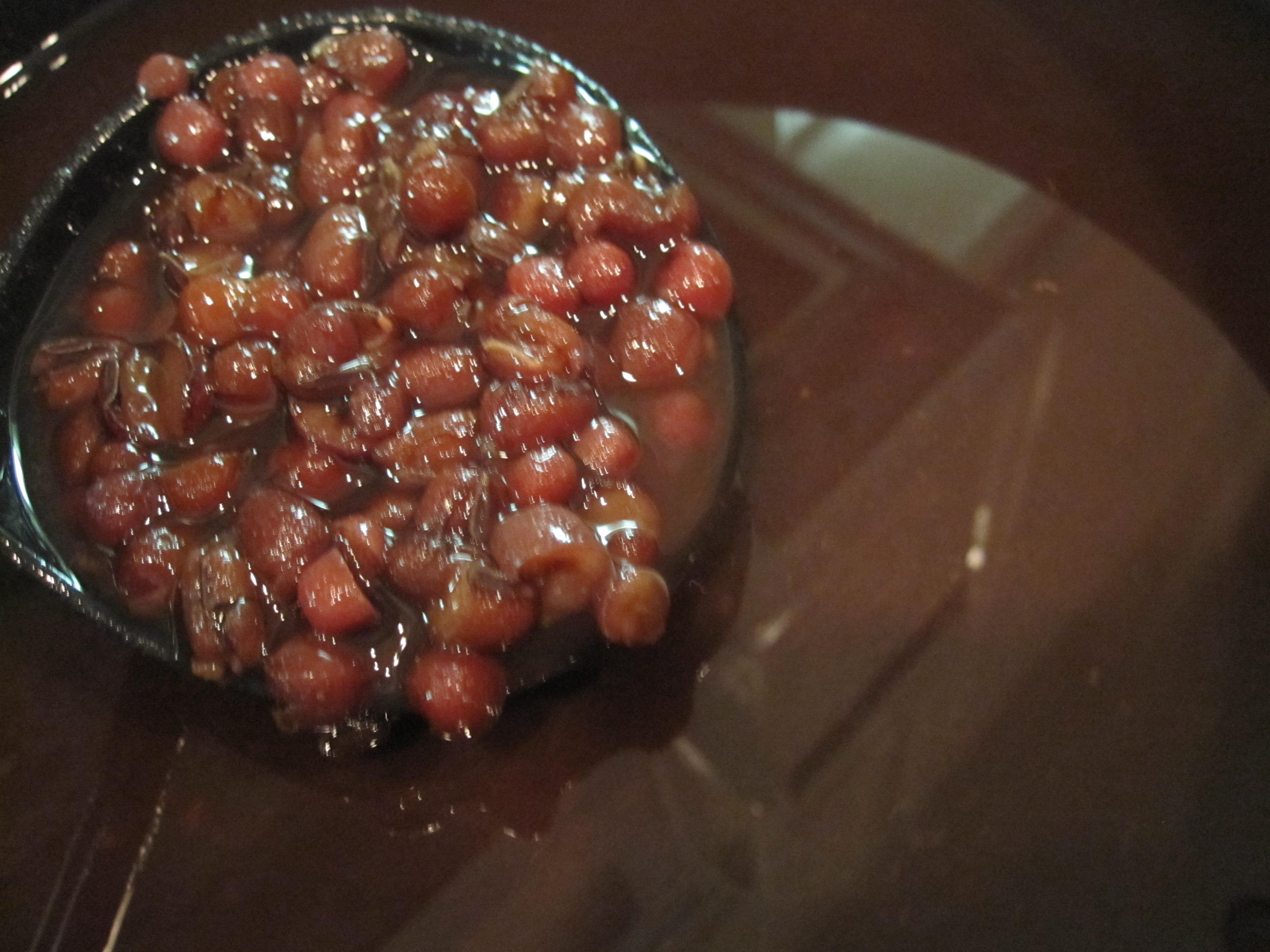
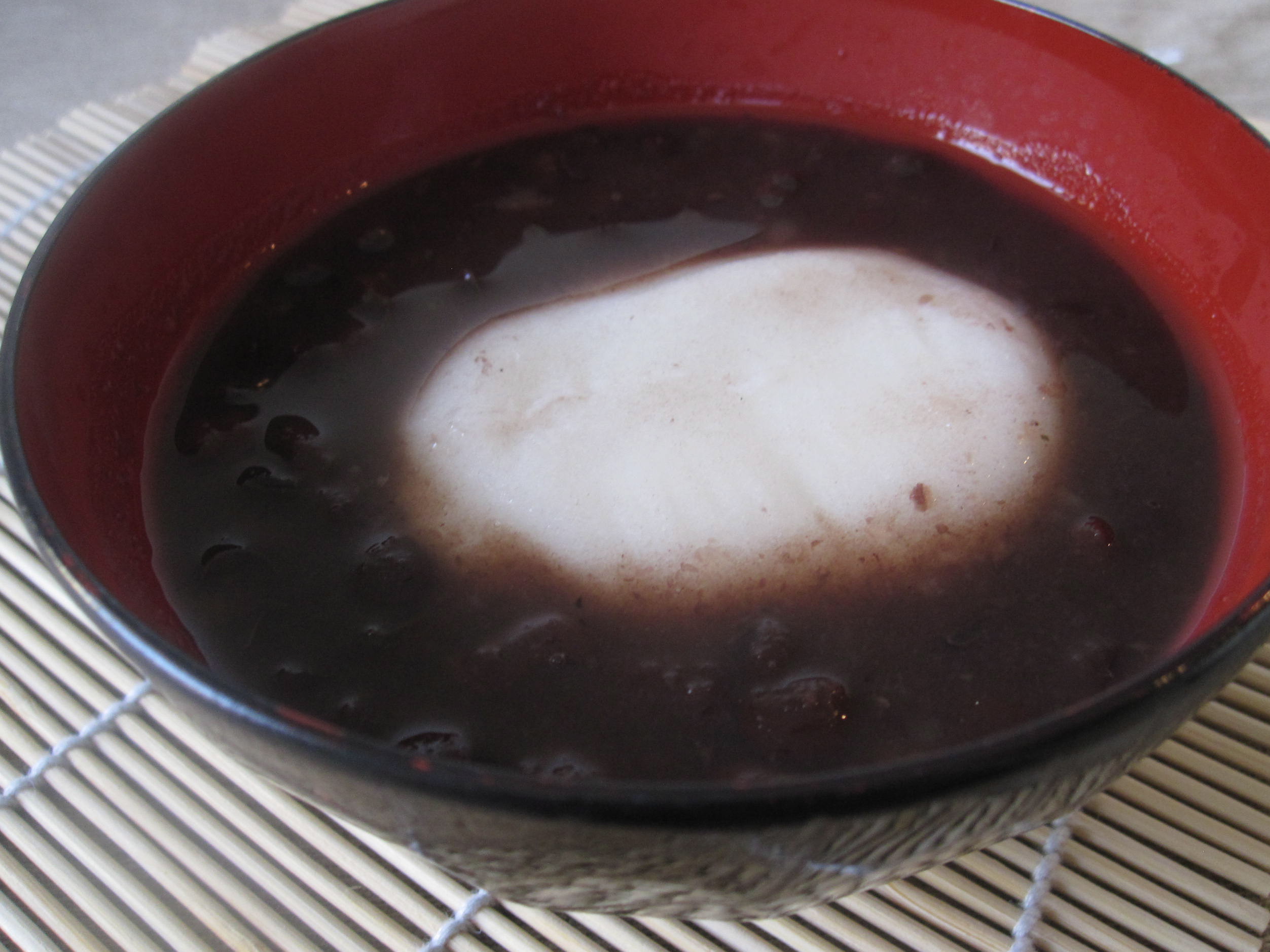
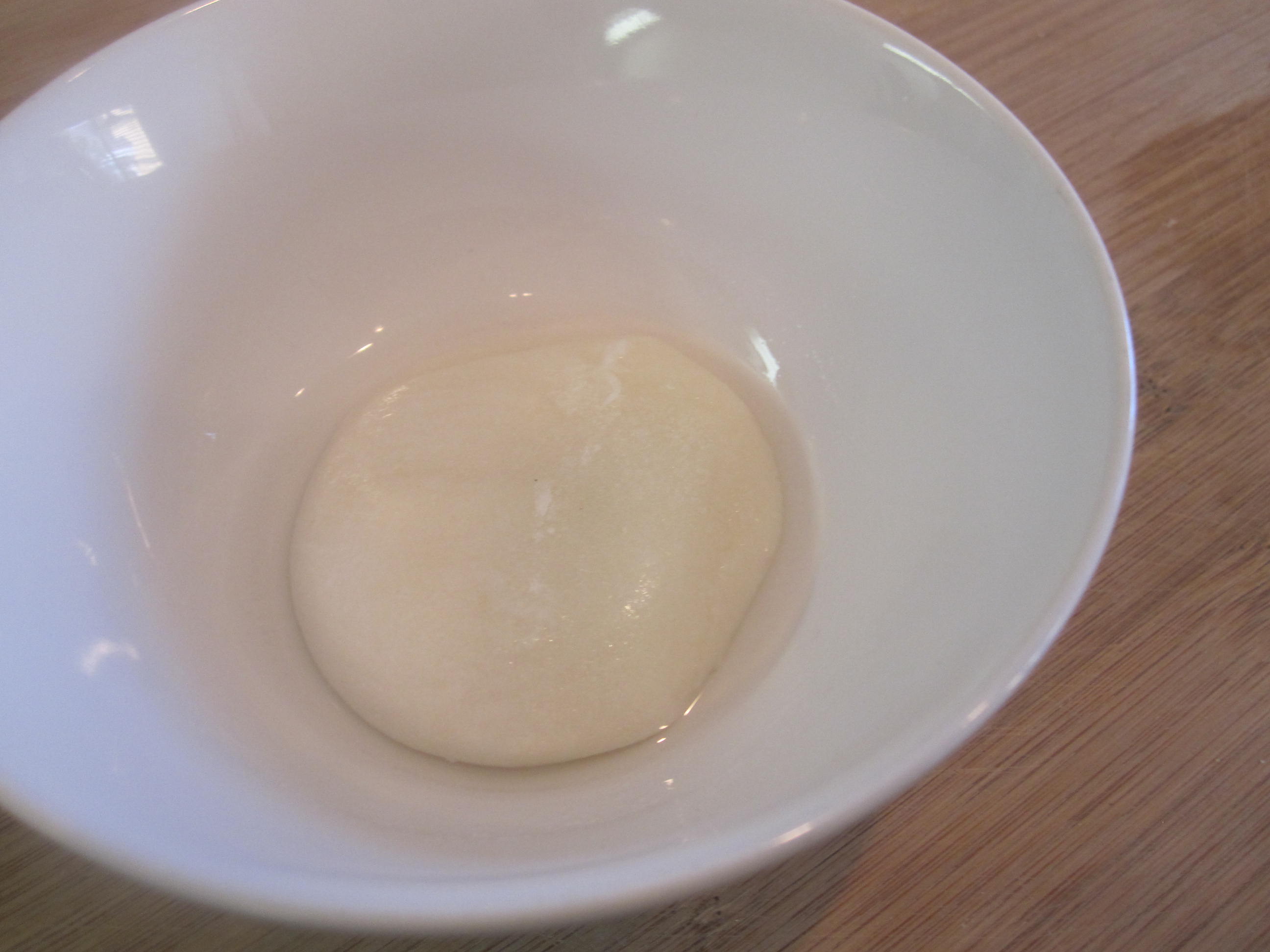
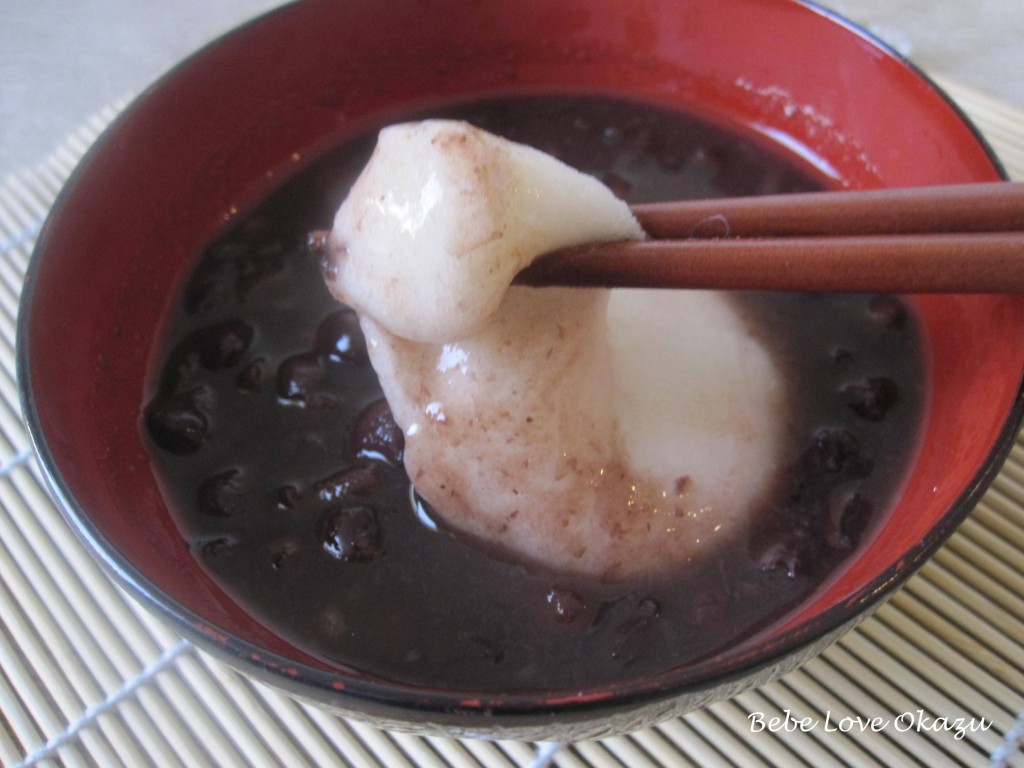
27 Comments